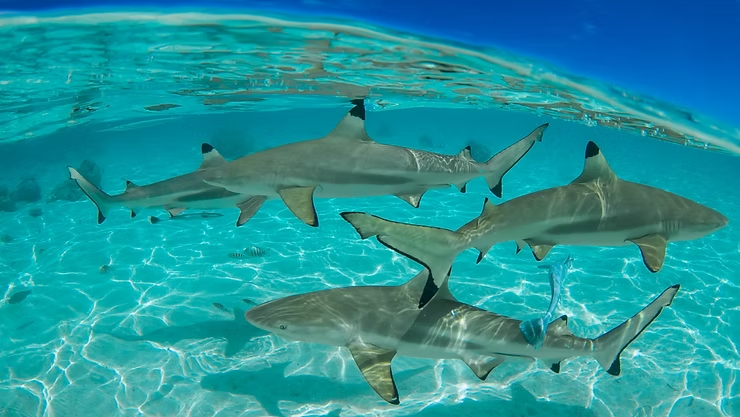Sharks: The Ocean’s Ultimate Predators
Sharks have fascinated humans for centuries with their sleek bodies, powerful jaws, and incredible survival skills. These ancient creatures are more than just predators—they are essential guardians of marine ecosystems. Let’s explore some of the most amazing facts about sharks and why they deserve both respect and protection.
Sharks Through Time
Sharks have been around for more than 400 million years, long before dinosaurs. Their ability to adapt has allowed them to survive dramatic shifts in the Earth’s climate and ecosystems. This resilience makes them one of the most successful creatures in evolutionary history.
Diversity Among Sharks
There are over 500 species of sharks, ranging from the tiny pygmy shark, just a few inches long, to the massive whale shark that can grow over 40 feet. Each species has unique traits and adaptations that help it thrive in its environment.
- Some sharks live in shallow reefs, others in the deep sea.
- Certain species can swim at speeds over 60 miles per hour.
- Sharks continuously replace their teeth, sometimes having tens of thousands over a lifetime.
Extraordinary Senses
Sharks are equipped with highly developed senses, especially smell. Up to two-thirds of their brain is dedicated to detecting scents, allowing them to locate prey from miles away. They can also detect the faint electric fields produced by living animals, making them exceptional hunters even in complete darkness.
Not Mindless Killers
Despite their reputation, sharks are not mindless killing machines. Movies and media often exaggerate their danger, but most shark species avoid humans. In fact, humans are not a preferred food source—seals, fish, and other marine animals are far more appealing. Many encounters with humans are simply investigative “test bites.”
Role in the Ecosystem
Sharks are vital for maintaining balance in marine ecosystems. By preying on the sick, weak, and abundant species, they prevent overpopulation and disease spread. They also help protect coral reefs and seagrass beds by controlling populations of plant-eating fish and turtles.
Unique Reproduction
Sharks have fascinating reproductive strategies. Some species lay eggs, while others give birth to live young. Gestation can last up to two years, and litters are typically small compared to other fish. This slow reproduction makes sharks vulnerable to overfishing and population decline.
Adaptations for Survival
From polar seas to tropical lagoons, sharks have adapted to nearly every ocean habitat. Their streamlined bodies, oil-filled livers, and hydrodynamic skin help them move efficiently. Some even use camouflage or bioluminescence to blend with their surroundings and hunt more effectively.
Sharks and Misconceptions
Sharks often suffer from a negative image fueled by fear-based stories. In reality, they are more afraid of humans than we are of them. Sadly, while humans rarely fall victim to sharks, millions of sharks are killed each year through overfishing and fin harvesting. Their populations have dropped dramatically in recent decades.
Conclusion
Sharks are extraordinary creatures that play a critical role in ocean health. From their long evolutionary history to their ecological importance, they are far more than fearsome predators. Protecting sharks means protecting the future of our oceans. Next time you think of sharks, see them not as villains, but as essential guardians of marine life.
Frequently Asked Questions
How long have sharks existed?
Sharks have been around for more than 400 million years, predating dinosaurs.
How many shark species are there?
There are over 500 known shark species with diverse adaptations.
Are sharks dangerous to humans?
Most sharks are not interested in humans and avoid contact whenever possible.
Why are sharks important to the ecosystem?
They control prey populations, promote biodiversity, and maintain the health of reefs and seagrass beds.

